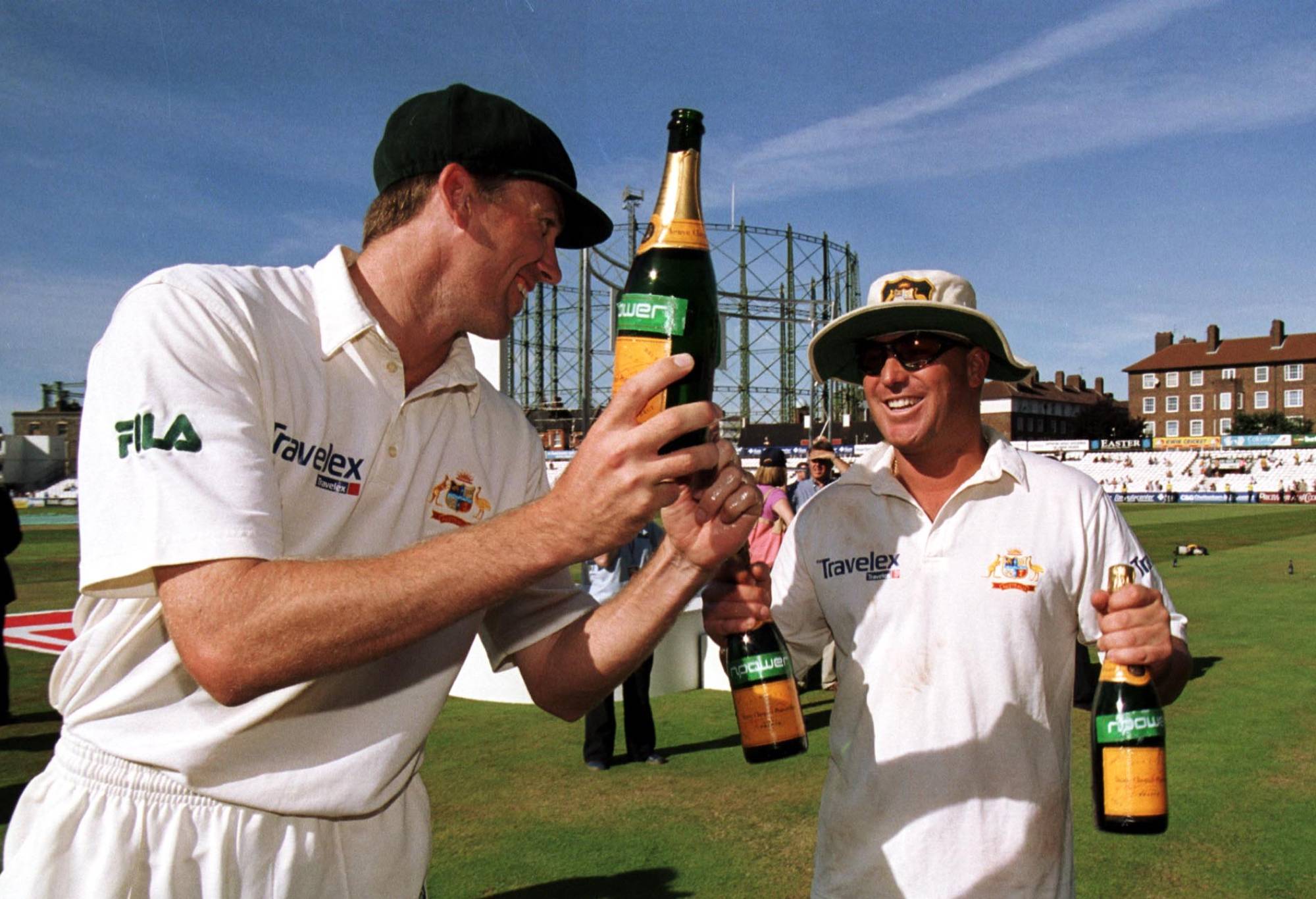Australia’s awesome foursome are within striking distance of becoming the most prolific wicket-taking quartet in Test cricket history but they’ll never be the greatest.
The Blues brothers of Pat Cummins, Mitchell Starc, Josh Hazlewood and Nathan Lyon now have 390 wickets to their name in Tests where all four have lined up.
ABC Radio’s long-time statistician Ric Finlay has crunched the numbers and are on track to break the record during this series against Pakistan as they are now 26 short of the best-performed quartet of England’s James Anderson, Stuart Broad, Ben Stokes and Moeen Ali, who took 416 between them.
Australian cricket has been blessed to have four top-line performers born within a few years of each other.
They command universal respect but they don’t necessarily strike fear into the heart of opposition batters.
It’s tough to compare Test cricket across the eras with the changing number of games, the rise in professionalism and athleticism in recent decades, and the growth in the number of countries taking part.
The West Indies had what was generally accepted to be the greatest bowling attack in history from the late 1970s through until the 1990s.
You can pretty much take your pick in making up a quartet between a range of fearsome fast bowlers who not only performed when wickets were full of pace but managed to maintain the West Indies’ unbeaten Test series streak for a decade-plus when touring on the low and slow Asian pitches.
The first manifestation revolved around Michael Holding, Joel Garner, Andy Roberts and Colin Croft.
They were phased out and replaced by some rather handy replacements in Malcolm Marshall, Curtly Ambrose, Courney Walsh and Ian Bishop.
There was nowhere to hide for batters in that era of Calypso carnage.
Even when one of the frontliners was out, there was always another nasty Windies paceman ready to step in like Kenny and Winston Benjamin, Patrick Patterson or Wayne Daniel.
The Windies were the gold standard until a little later in the 1990s when Shane Warne revolutionised leg-spin bowling and was joined by Glenn McGrath, then Jason Gillespie and finally, in the last Test before the end of the century, Brett Lee.
Between Warne’s mesmerising ability to unnerve batters, McGrath’s relentless accuracy, Gillespie’s seam movement and Lee’s raw pace, they covered all bases.
Due to injuries and Warne’s doping ban, they only played 16 Tests together in the eight years their careers intersected before Gillespie, then Warne and McGrath bowed out within a year of each other in 2006-07.
They snared 265 wickets in those matches in arguably Australia’s most dominant period of Test cricket – Warne led the way with 89, McGrath 77, Lee 52 and Gillespie 47.
The current Aussie bowling brigade will finish with many more scalps together than their predecessors of a generation ago but that is partly due to the fact that they were lucky enough to have their four careers pretty much run parallel.
Lyon was the first cab off the rank in 2011 on a winter tour of Sri Lanka, followed by Cummins and Starc the following home summer and Hazlewood three years later in 2014.
Their sustained success has led to a generation of bowlers not getting much of a look-in, not only in the Test team but the ODI and T20 sides as well.
Former NSW swing bowler Trent Copeland, an occasional teammate and frequent fill-in for them at Sheffield Shield level, said on Seven commentary during the First Test triumph over Pakistan that the likes of Scott Boland, Michael Neser and James Pattinson would have played a lot more international cricket if not for this Fab Four.
Copeland actually claimed Pattinson at one stage was one of the top five bowlers in world cricket but was unable to add to his tally of baggy greens due to the incumbent quicks.
He likened their plight to Shield batters in the 1990s like Jamie Siddons, Darren Lehmann, Stuart Law whose path to the Test team was blocked by generational talents in Steve and Mark Waugh, and Ricky Ponting.
Boland is now 34 and Neser’s 33 so time is running out for them.

Pat Cummins, Mitchell Starc, Josh Hazlewood and Nathan Lyon. (Photo by Mark Metcalfe – CA/Cricket Australia via Getty Images)
Lance Morris is the latest speedster to have his career slowed down by the established Aussie attack.
At 25, time is on his side but after spending the entire home summer last season as a travelling reserve and doing likewise in India earlier this year, he was again surplus to requirements as a squad member in his home turf of Perth last week.
He’s been released from the squad for the Boxing Day Test to get some game time under his belt in the BBL.
Australia are unlikely to play Morris in the two-Test tour to New Zealand at the end of the summer so his best bet of finally earning a debut appears to be in the two-match series against the West Indies in Brisbane and Adelaide next month.

Shane Warne and Glenn McGrath at The Oval in 2001. Photo: Hamish Blair/ALLSPORT
The Australian selectors employed a rotation policy in the UK earlier this year when they had six Tests in the space of two months but after Boland was bullied by the England batters in the Ashes, they went back to the tried and true trio to close out the final two fixtures of the series.
At some point, the Australian selectors are going to have to give Morris, Jhye Richardson, Todd Murphy and other bowling prospects a chance to prove they can cut it at Test level.
But with the number of Tests potentially being reduced in the future, there may never be a quartet as prolific as the current bowling attack.
And it’s almost certain there’ll never be one as good as what the Windies rolled out over many years or when Warne, McGrath, Gillespie and Lee reigned supreme.






























































































